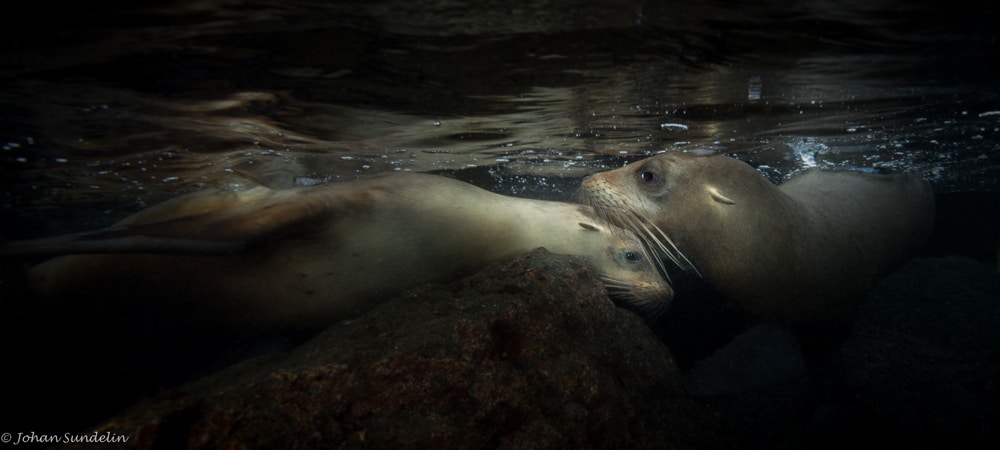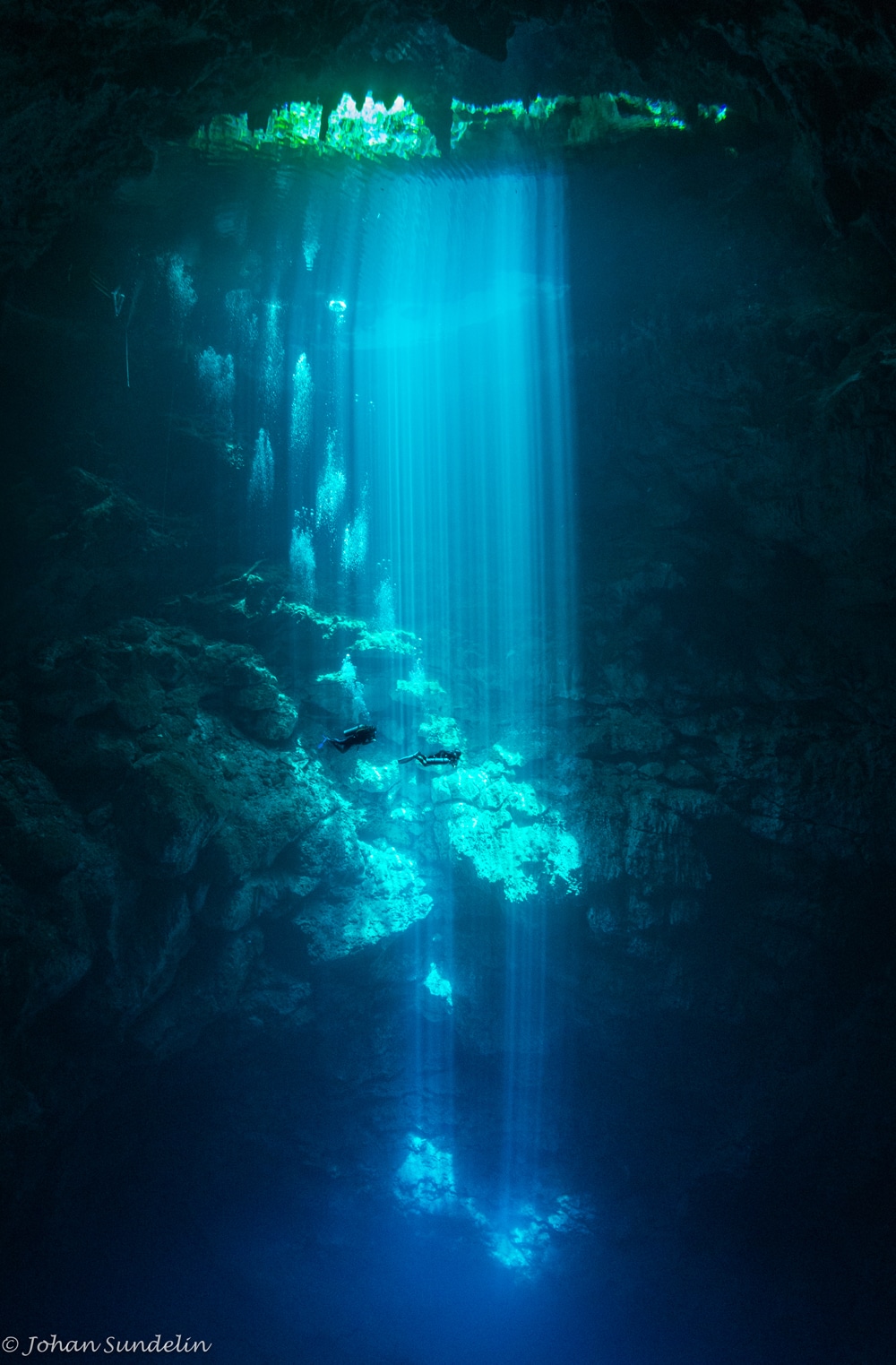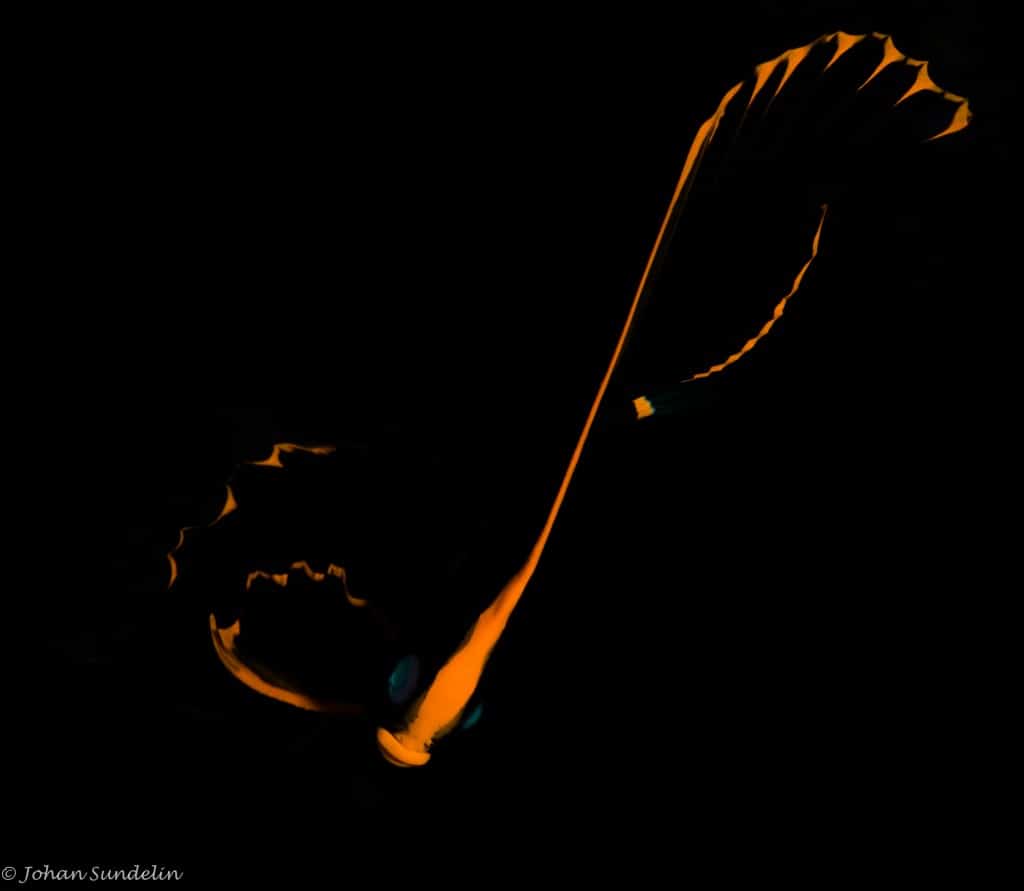News
Scubaverse Underwater Photographer Interview: Johan Sundelin

In an ongoing series, Scubaverse.com’s Underwater Photography Editors Nick and Caroline Robertson-Brown talk to underwater photographers from around the world that they admire. This interview is with Johan Sundelin.
 My current passion, or even obsession, in underwater photography did not come as a surprise since I’m born in Aquarius, I’ve been an amateur photographer since the age of 10 and a diver since the age of 15. The time (and money) spent on this hobby started to seriously increase five years ago when my whole family of four jumped on the same interest. We do dive in our home country Sweden but like most people we prefer tropical waters.
My current passion, or even obsession, in underwater photography did not come as a surprise since I’m born in Aquarius, I’ve been an amateur photographer since the age of 10 and a diver since the age of 15. The time (and money) spent on this hobby started to seriously increase five years ago when my whole family of four jumped on the same interest. We do dive in our home country Sweden but like most people we prefer tropical waters.
Last year’s victory in the Nordic Championship for underwater photography improved my Swedish ranking to the level where I will represent Sweden in the World Championship this year. However, my proudest moment was when in competition with 17,000 entries from 50 countries, I managed to win the underwater category of the Outdoor Photographer of the Year 2016.
You can see more of my work at www.instagram.com/sundelinsphoto
N/C: How did your underwater photography start?
JS: Snorkelling with the family and young children in the Red Sea everyone got out of the water and tried to describe what they have seen. To make the job easier we bought a Canon underwater house for our compact camera. Then we all got hooked!
N/C: What is your favourite u/w camera equipment (past & present) & why?
JS: The Canon G12 was a fantastic camera to both take some decent pictures with and learn all the basic of underwater photography. Now I use a Nikon D600 in a Sea & Sea housing. Often I take action photography of sharks without looking into the viewfinder. The extra opportunity of cropping that the FX format gives is then appreciated. I also often use the extra dynamic range that the format provides.

N/C: What would be your advice to anyone new to underwater photography?
JS: Firstly, start small. Today’s compact cameras can take some really high quality pictures. I would however make the investment of a separate flash. It makes all the difference. Secondly use manual settings. I was first hesitant of using manual settings considering I often use different auto modes for land photography. I did however quickly learn that manual mode is almost a must underwater.
N/C: What, or who, has been your single biggest inspiration for your underwater photography?
JS: Magnus Lundgren has been kind enough to share a lot of his tricks that made him a National Geographic Photographer. The UW photographer and Marine Biologist Anders Salesjö has taught me the importance of knowing the behaviour of your subject.
N/C: What image are you most proud of and why?
JS: My personal favourite is the picture of two divers in a cenote in Mexico. The reason is that for me it captures the essence of diving; the natural beauty and the weightless feeling of the divers.

N/C: Where is your favourite dive location, and is it for the photography?
JS: I’m a positive person and tend to think the last dive was the best. This time it actually might be right since when I snorkelled with a couple of humpback whales in the Dominican Republic I actually cried of happiness after the extremely intense experience. To be in the middle of two 40 tonne whales that play with you and copy your behaviour was truly out of this world.
N/C: What are you views on marine life manipulation, moving subjects?
JS: I’m against everything that could be harmful to animals including moving them. Moving subjects is one of the few negative aspects of this hobby and needs to be stopped.

N/C: What do you look for when you are making your images?
JS: My ultimate goal is to evoke an emotional reaction. If the picture touches the viewer, then I believe they might care a little bit more about our oceans. I believe this is what most underwater photographers aim for with their pictures.
N/C: What motivates you to take u/w photos?
JS: The most fundamental reason is to craft my memory. The more beautiful my picture, the more beautiful my memory will be. The creative process of pre-studying, planning, diving and post-processing is also fun in itself. Finally I must be honest and admit that a bit of recognition also boosts the motivation.

N/C: If you could photograph any one thing/place what or where would that be?
JS: A 50/50 picture of a bear catching a salmon would be amazing.
N/C: Finally, can you describe how you took the winning picture in the Outdoor Photographer Of the Year 2016?

JS: The location is Santa Fe Island, Galapagos Islands, Ecuador. While snorkelling with a colony of California sea lions I quickly noticed two particular photography challenges. The first was how to avoid the attention of the large, aggressive and protective alpha male. The second was the enormous speed of the animals in the water. Lying very still in the water and using high ISO solved the issues. That allowed me to freeze this moment of tenderness using only natural light.
You can read more about The Outdoor Photographer of the Year competition in our book review here: www.scubaverse.com/outdoor-photographer-year-book-review/
Gear News
Introducing the TR-80, IR-50 and CS-30 Regulators from DYNAMICNORD

Whether you are a beginner or a professional diver – with the three new main regulators from DYNAMICNORD, everyone will find their favourite regulator. They all look super stylish.
Excellent performance with the TR-80
Quality and performance are the be-all and end-all for regulators. It is not for nothing that the TR stands for Tec Reg. The innovative design of the TR-80 guarantees absolute reliability – even in ice-cold waters.

Perfect breathing effort at 0.8 J/l / certified for diving in waters below 10 degrees / structural design made of solid brass for best cold protection / membrane-compensated design with dry seal of the first stage / reduced exhalation effort thanks to optimized exhalation membrane and bubble deflector / adjustable Venturi (dive/predive) and adjustment knob for individual inhalation comfort / innovative design of the front cover prevents free-flow in strong currents or when diving with scooters / design made of sandblasted brass, matt chrome finish / 2 HP and 4 LP outlets / mouthpiece made of high-quality, anti-allergic silicone for maximum comfort.


Amazing underwater adventures with the IR-50
The IR-50 is the top regulator for advanced and experienced divers. Natural breathing is the essence of this regulator.

Ideal breathing effort at 0.8 J/l /certified for diving in waters below 10 degrees / compensated membrane / adjustable venturi (dive/predive) and adjustment knob for individual inhalation comfort/ outlet valve and deflector for minimum exhalation effort and reduction of bubbles on the face / design made of sandblasted brass, matt chrome finish / 2 HP and 4 NP outlets / mouthpiece made of high-quality, anti-allergic silicone for maximum comfort.


The Workhorse – our CS-30
For diving centres and diving beginners – the workhorse stands for strong construction, reliability and robustness. Perfect for your training.

Optimal breathing effort at 0.8 J/l /recommended for diving in waters above 10 degrees / non-compensated piston / adjustable venturi (dive/predive) / outlet valve and deflector for minimum exhalation effort and reduction of bubbles on the face / design made of sandblasted brass, matt chrome finish / 1 HP and 3 NP outlets / mouthpiece made of high-quality, anti-allergic silicone for maximum comfort.


Octopus OP-30
The OP-30 is the ideal addition to all DYNAMICNORD regulators. It is identical in construction to the CS-30.

The TR-80, IR-50, CS-30 (DIN & INT) regulators and the Octopus OP-30 are available from DYNAMICNORD dealers and in the online store.
DYNAMICNORD – Your Outdoor Companion.
Marine Life & Conservation
Paul Watson Released as Denmark Blocks Japan’s Extradition Bid

Renowned anti-whaling activist Paul Watson has been released from custody in Greenland after spending five months in detention. Denmark’s Justice Ministry rejected Japan’s request for his extradition, citing insufficient guarantees that his time already served in custody would be credited against any potential sentence.
The 74-year-old Canadian-American was arrested on July 21 in Nuuk, Greenland’s capital, when his ship docked to refuel. His arrest was based on a 2012 Japanese warrant related to a 2010 encounter in Antarctic waters. Japan alleged Watson obstructed operations and caused damage to a whaling research ship during efforts to disrupt illegal whaling. Watson has consistently denied these claims, maintaining his commitment to marine conservation.
Denmark, which oversees extradition matters for Greenland, concluded that while the legal conditions for extradition were met, the lack of assurances from Japan regarding time-served credit made extradition untenable.
In a video shared by his foundation, Watson expressed gratitude and relief, saying, “After five months, it’s good to be out… and good to know they’re not sending me to Japan.” He added that the most difficult part of his time in custody was being separated from his two young sons.
Watson is a pioneering figure in marine conservation, known for founding the Captain Paul Watson Foundation in 2022 after decades of activism with the Sea Shepherd Conservation Society. His bold efforts to defend marine life have earned him widespread support, including from celebrities and conservationists. His work has also been featured in the acclaimed reality TV series Whale Wars.
Watson’s lawyer, Jonas Christoffersen, praised the decision, stating, “We are happy and relieved that Paul Watson is now free.” He added that Watson is eager to reunite with his family and continue his vital work.
The arrest occurred while Watson’s vessel, the M/Y John Paul DeJoria, was en route to the North Pacific with a team of 26 volunteers to intercept a Japanese whaling ship. His foundation described the arrest as politically motivated and emphasized that Watson’s actions were focused on ending illegal whaling practices.
Japan resumed commercial whaling in 2019 after leaving the International Whaling Commission, asserting that whale meat is a cultural tradition. Conservationists, however, continue to challenge these practices, highlighting their impact on marine ecosystems.
Despite the challenges, Watson remains steadfast in his mission to protect marine life and bring attention to whaling practices. His dedication to ocean conservation has made him a globally respected advocate for the environment.
-

 News2 months ago
News2 months agoIconic SS United States to become the World’s Largest Artificial Reef
-

 News3 months ago
News3 months agoBook Review – 52 Assignments: Underwater Photography
-

 Gear News3 months ago
Gear News3 months agoDYNAMICNORD – New German diving brand enters the British market
-

 News3 months ago
News3 months agoExploring Cenote El Pit: A Diver’s Dream
-

 Gear News3 months ago
Gear News3 months agoTry BARE drysuits (and maybe even win one!) this Friday with Sea & Sea at North West Dive Fest
-

 Marine Life & Conservation3 months ago
Marine Life & Conservation3 months agoBook Review: Coral Triangle Cameos
-

 Blogs2 months ago
Blogs2 months agoDive the Egyptian Red Sea this Autumn with Regaldive
-

 News3 months ago
News3 months ago2024 Ocean Art Underwater Photo Competition Announced















